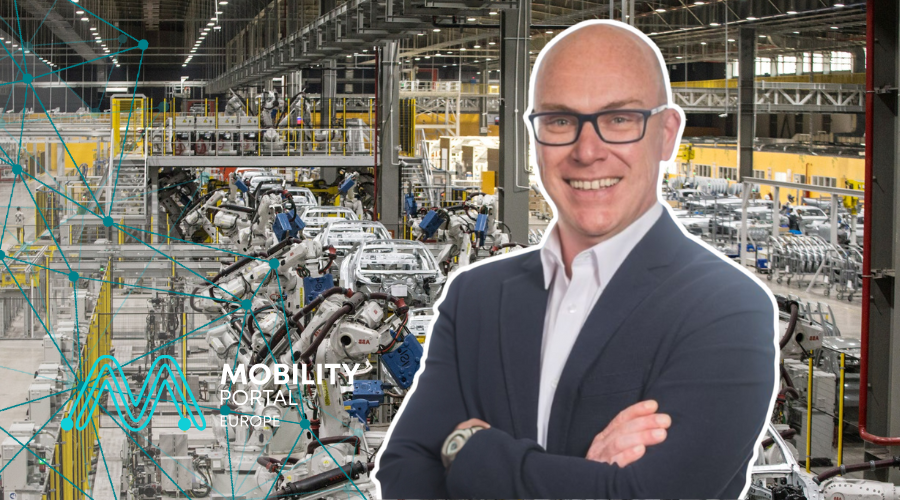European electric vehicle manufacturers are facing a moment of redefinition.
Trade tensions with the United States and the reliance on imported critical components have highlighted the need for a contingency strategy.
“The possibility of tariffs of up to 25% on EU car imports to the US requires a contingency plan,” says Didier Van Bouwel, Strategic Business Development Director at Cox Automotive Inc.
He adds: “A ‘Plan B’ could involve diversifying into new markets, such as Asia or South America, to reduce dependence on the United States.”
According to ACEA data, only 32% of critical components for electric vehicles are currently produced in Europe, while more than 65% come from Asia.

This situation complicates the landscape for eMobility and reinforces the urgency of reconfiguring supply chains.
“Within Europe, this could lead to a shift in production from the west to the east of the continent, where labour is cheaper, in order to remain competitive,” Van Bouwel explains.
But for him, the key lies not only in relocating production facilities, but in adopting a broader view:
“By taking proactive measures, European manufacturers can face these challenges and maintain their resilience.”
Latin America: From Future Promise to Strategic Hub
Often underestimated, Latin America now offers increasingly favourable conditions for the expansion of eMobility.
In 2024, Tesla chose Chile as its second official market in the region (after Mexico), where it outpaced BYD in full-electric vehicle sales with 948 units in just nine months.
“The appetite for electric vehicles in today’s context of economic uncertainty is mixed,” acknowledges Van Bouwel. “However, in regions like Asia or Latin America, there are clear signs of progress, with consumers increasingly interested in new technologies.”
In Brazil, over 14,000 charging points have already been installed, and energy company Raizen —in partnership with BYD— has announced the construction of 600 charging stations over the next three years.
Meanwhile, countries like Colombia are advancing with key regulations, such as Resolutions 40405 and 40223, which govern the sale of electricity for charging and define technical interoperability standards.
“Sustainability will become even more important, driving investment in green technologies and infrastructure, such as battery production and charging networks,” Van Bouwel affirms.
With more than 20 years of experience in the automotive sector, Van Bouwel specialises in business development strategies across Europe.
He currently serves as Strategic Business Development Director at Cox Automotive International, where he leads key initiatives in markets such as Brazil, Europe and Australia.
Throughout his career at Cox Automotive (which operates in Spain through Manheim España), he has held several leadership roles, including Chief Operating Officer at Modix International, a company providing digital solutions for automotive commerce.
With this background, Van Bouwel emphasizes that Latin America is no longer just a future opportunity in terms of volume, but fertile ground for strategic positioning in the present.
Asia: The Pivot Point in Production Reconfiguration
Alongside Latin America, Asia offers a combination of tax incentives, expanding infrastructure, and a large domestic market —particularly in India, Indonesia, and Thailand.
“First, they must understand and comply with local regulations,” Van Bouwel comments on how brands should approach these emerging markets.
“They should also leverage their technological advantages, such as in autonomous driving. Building a strong dealer network is essential —something that is often overlooked,” he highlights.
India, for example, recorded over 1 million electric vehicle sales in 2023 (across all categories), and Thailand plans for 30% of its automotive production to be electric by 2030.
Indonesia has offered direct tax incentives to carmakers committing to local production, resulting in a tenfold increase in sales in just three years.
According to Van Bouwel, these strategies are sound: “A ‘Plan B’ doesn’t mean abandoning Europe, but expanding reach, ensuring regional presence, and avoiding operational risks.”
Global Realignment: Resilience and Strategic Insight
The global eMobility landscape has changed. Decisions on investment, production, and expansion can no longer be based solely on Europe or the US.
The new scenario requires a deeper understanding of regions with lower visibility but strong potential.
“Globally, the adoption of electric vehicles continues to rise, especially in countries like China and parts of Europe,” Van Bouwel concludes.
“Despite the challenges, the long-term outlook for electric vehicles remains optimistic in those places where there are strong policies and infrastructure investment.”
With stagnation in some markets and tightening conditions in others, accurately reading developments in Asia and Latin America could become the competitive advantage that defines the next decade for the European automotive industry.








